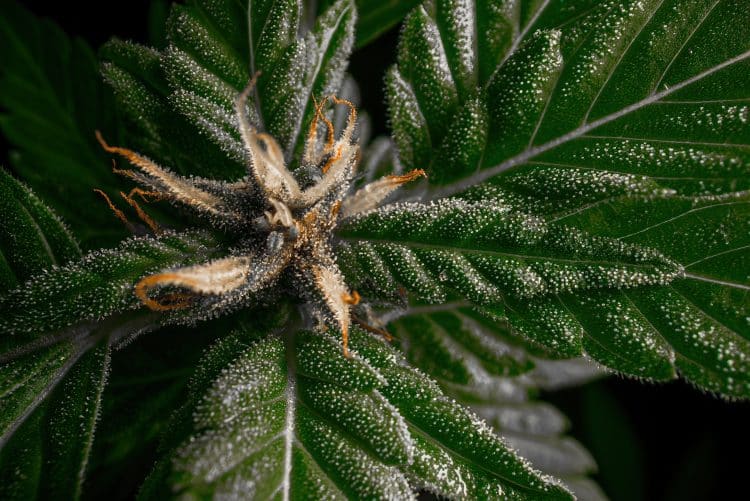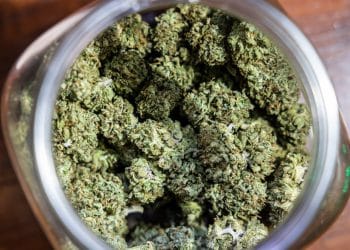Here you can find a selection of cannabis scientific studies published in the latest month. Each article is correlated with a short abstract describing the purpose of the study and the main research findings.
A great cannabis culture comes from great and peer reviewed sources! For this reason we believe in the importance of consulting reliable sources. Whether you are interested in a particular article don’t hesitate to read the full piece for more information.
Cannabis and Health ⎯ Best new findings
Cannabis for chronic pain: cardiovascular safety in a nationwide Danish study
Recreational use of cannabis has been linked with cardiovascular side effects. For this reason it is important to assess if prescribing cannabis can be dangerous for certain patients. A recent study using nationwide Danish registers, investigated on patients with chronic pain initiating first-time medical cannabis during 2018-2021.
Among them, the risk of first-time arrhythmia and acute coronary syndrome were observed. Among 1.88 million patients with chronic pain, 5391 patients claimed a prescription of medical cannabis and were compared with 26941 control patients of the same sex, age and condition. Arrhythmia was observed in 42 and 107 individuals, respectively, within 180 days. Cannabis was associated with an elevated risk of arrhythmia onset.
Source: https://doi.org/10.1093/eurheartj/ehad834
Cannabinerol (CBNR) Influences Synaptic Genes Associated with Cytoskeleton and Ion Channels in NSC-34 Cell Line: A Transcriptomic Study
This study investigates the cannabinoid cannabinerol (CBNR) on neuronal physiology. To date many cannabinoids have been proposed as a possible novel approach to treat neurological disorders causing both motor and cognitive impairments. CBNR have been found to influence synaptic genes linked with synapse specialization and organization, including the one associated with cytoskeleton and ion channels. These findings suggest further studies in order to evaluate the potential neuroprotective capabilities of CBNR.
Source: https://doi.org/10.3390/biomedicines12010189
The Effect of Oil-Based Cannabis Extracts on Metabolic Parameters and Microbiota Composition of Mice Fed a Standard and a High-Fat Diet
In this research the effects of tetrahydrocannabinol (THC) and cannabidiol (CBD) enriched medical cannabis oil were tested on obesity parameters and gut microbiota composition of mice fed either with standard or high-fat diet. The levels of cannabinoid-like lipid mediators in the liver, together with the ones of endocannabinoid mediators in the liver were measured.
From this study came out that THC-enriched extracts prevented weight gain in a highly-fat diet. Moreover the extracts enriched with THC reduced the diet-induced liver steatosis due to the reduced levels of the lipid mediators PEA and DHEA. On the other hand CBD-enriched extracts didn’t affect the weight gain, but exacerbated liver steatosis. THC enriched cannabis extract seems to exert optimal potential anti-obesity effects.
Source: https://doi.org/10.3390/ijms25021073
The Neurotherapeutic Arsenal in Cannabis sativa: Insights into Anti-Neuroinflammatory and Neuroprotective Activity and Potential Entourage Effects
This comprehensive review investigates the relationships and synergies between cannabis constituents including cannabinoids, terpenes, and flavonoids. In this review the promising role of cannabis in potential innovative therapies against neuro-inflammations is presented, offering an overview of the synergistic action of cannabis phytoconstituents, that have been always hypothesized as the “entourage effect”, but there is still lack of consistent studies about it.
Source: https://doi.org/10.3390/molecules29020410
The impact of cannabis on non-medical opioid use among individuals receiving pharmacotherapies for opioid use disorder: a systematic review and meta-analysis of longitudinal studies
This comprehensive study was performed in order to clarify if there is a relationship between cannabis consumption and the possibility of returning to use opioids recreationally during treatment for opioid use disorder (OUD).
Using multiple databases and random-effects models, a sensitivity analysis was conducted to understand the differences between peoples receiving treatment with buprenorphine, methadone, or naltrexone against OUD. Overall there was no significant association between cannabis use and non-medical opioid use among patients.
Nevertheless it should be noticed that there is need for individualized approaches for cannabis use and there are still cases in which it is important to not consume cannabis in order to maintain OUD pharmacotherapies.
Source: https://doi.org/10.1080/00952990.2023.2287406
Cannabis and Technology ⎯ Best new findings
Cannabis extract-loaded lipid and chitosan-coated lipid nanoparticles with antifungal activity
This research study combines natural plant-derived compounds with nanotechnology in order to develop new eco-friendly and sustainable agricultural systems in order to prevent the formation of fungi. Solid-Lipid Nanoparticles (SLN) containing cannabis extract were synthesized by homogenization with the ultrasonication method into a lipidic matrix-coated with chitosan.
The entrapment efficiency of cannabis encapsulation was higher than 20% with effective in vitro release after 24h. The system was tested against Fusarium solani sp. Eumartii showing great synergistic effects of chitosan and the cannabis phytoconstituents including terpenes.
Source: https://doi.org/10.1016/j.colsurfa.2024.133207
High Performance Liquid Chromatography
In this work, the different variables that influence a chromatographic analysis using high performance liquid chromatography (HPLC) such as temperature, sample pH, elution flow and wavelength have been evaluated and the chromatographic conditions for the analytical quantification of the metabolites cannabidiol (CBD) and tetrahydrocannabinol (THC) have been standardized.
Source: http://dx.doi.org/10.2139/ssrn.4687655
Noninvasive Early Detection of Nutrient Deficiencies in Greenhouse-Grown Industrial Hemp Using Hyperspectral Imaging
This research evaluated hyperspectral imaging for early identification of nitrogen, phosphorus, and potassium (NPK) deficiencies across three greenhouse-grown industrial hemp plant chemovars. Hyperspectral imaging is a non-invasive technology with potential for early nutrient stress detection in plants prior to visible symptoms.
The detection of wavelengths related to chlorophyll, carotenoid, and anthocyanin absorption as optimal for classification, highlights the technology’s capacity to detect subtle impending biochemical perturbations linked to emerging nutrient deficiencies. The identification of stress at the pre-visual stage could help cannabis producers in acting on time with corrective actions in order to improve their final yield and product quality.
Source: https://doi.org/10.3390/rs16010187
Oral delivery of cannabidiol: Revealing the formulation and absorption challenges
The goal of this review is to investigate published literature and gather useful information aimed at better formulation and the improvement of oral bioavailability in drug delivery of CBD. The study focuses on the exploration of CBD physicochemical properties, its absorption and permeation from gastrointestinal tract into the systemic circulation and the distribution, metabolism and excretion.
It is widely acknowledged that CBD is chemically unstable, especially in acidic environments, and undergoes extensive metabolism, resulting in the formation of pharmacologically active metabolites. The formulation challenges for CBD mainly focus around problems of chemical instability, biological membrane permeability, and pre-systemic metabolism.
Source: https://doi.org/10.1016/j.jddst.2023.105316
Chemical Characterization of 29 Industrial Hemp seeds (Cannabis sativaL.) Varieties
This research aimed to determine the complete chemical composition of 29 different chemovars of whole hemp seeds including the fatty acid composition, the mineral composition, amino acid profile, and cannabinoids content. Proximate composition results showed that crude protein and fat contents varied from 21.6–28.9% and 21.1–35.7%, respectively.
The three major fatty acids found were linoleic acid, oleic acid and α-linolenic acid. As amino acids the study highlighted the presence of arginine while lysine was contained in lower quantities. In terms of mineral composition iron and potassium were the minerals found in higher amounts.
Regarding cannabinoids, tetrahydrocannabinol (THC) was only found in small traces and detected in only five varieties. From this study it seems that the nutritional composition of hemp seeds makes them suitable to be added in animals and humans diets as a highly beneficial new ingredient.
Source: https://doi.org/10.3390/foods13020210
Veterinary Use of Cannabis — Best Latest Findings
Improved quality of life and pain relief in mature horses with osteoarthritis after oral transmucosal cannabidiol oil administration as part of an analgesic regimen
Cannabidiol (CBD) containing oil is widely used among horse owners against osteoarthritis. This pathology is common in horses and the resulting signs are avoidance of touch, reluctance to move and to eat. The potential therapeutic effects of 15% CBD oil have been investigated on twenty horses suffering from osteoarthritis.
Hemp oil containing this percentage of CBD was shown to relieve symptoms of inflammation and to improve the overall horses health and quality of life for the reduced pain. Nevertheless there is still a lack of information about the long term safety and dosages.
Source: 10.3389/fvets.2024.1341396












